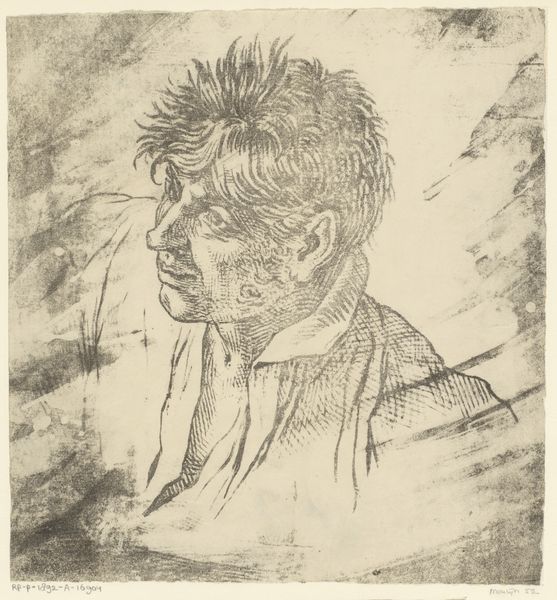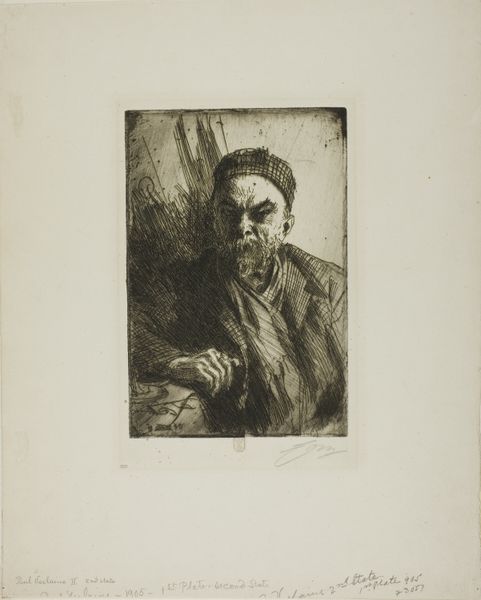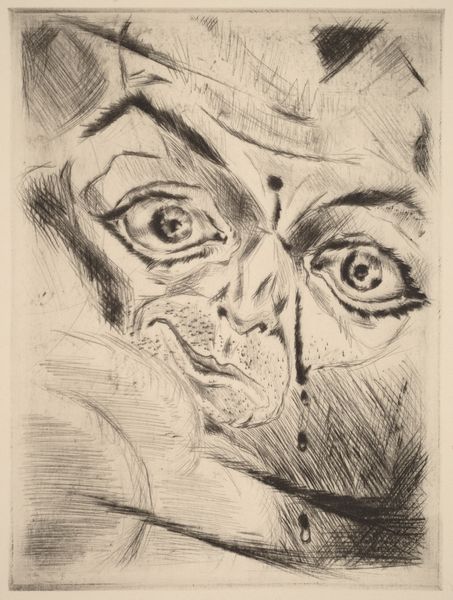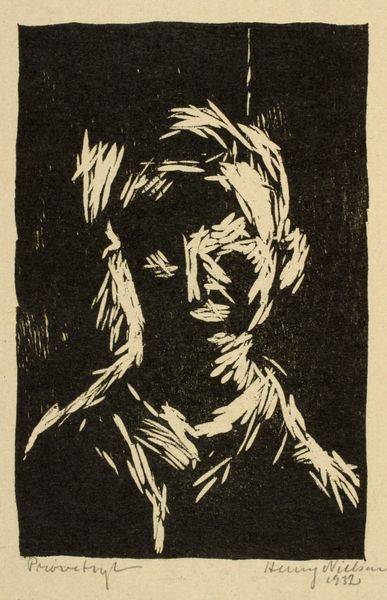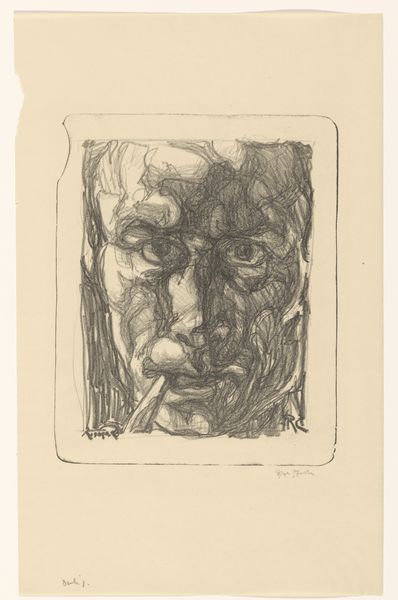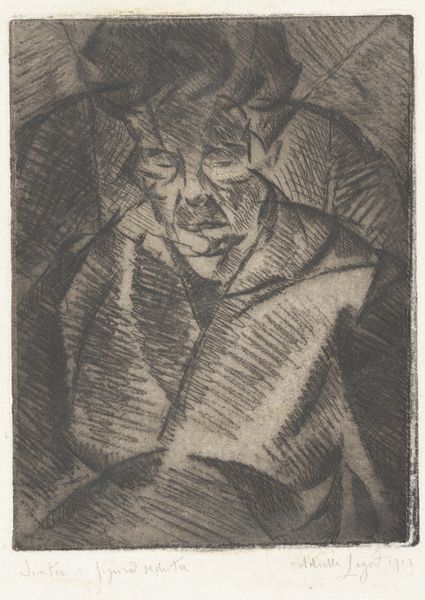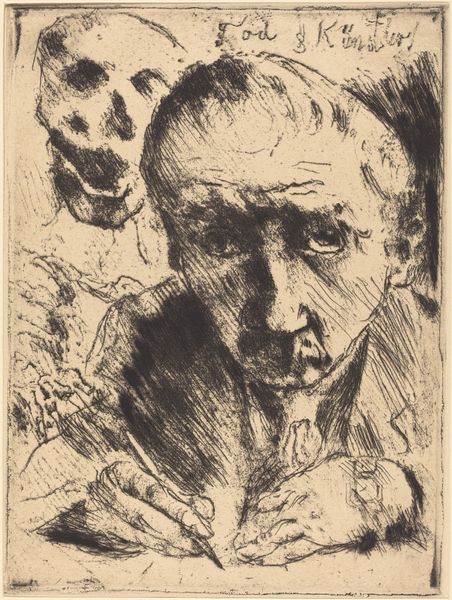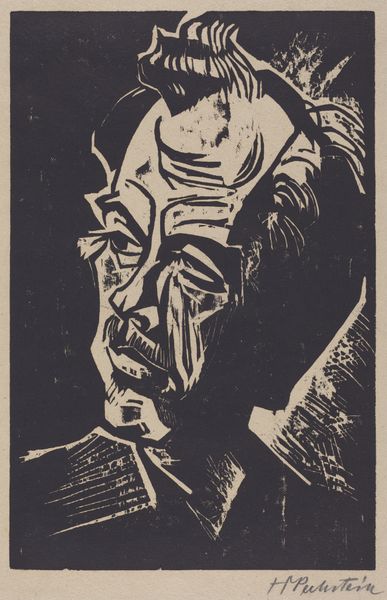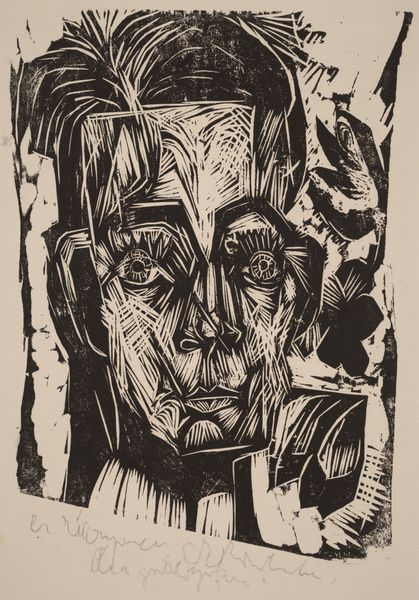
drawing, print, etching
#
portrait
#
drawing
#
self-portrait
# print
#
etching
#
german-expressionism
#
pencil drawing
#
expressionism
#
monochrome
Dimensions: plate: 39.5 x 29.7 cm (15 9/16 x 11 11/16 in.) sheet: 50.4 x 36.5 cm (19 13/16 x 14 3/8 in.)
Copyright: National Gallery of Art: CC0 1.0
Curator: This is Heinrich Tischler's "Self-Portrait," created in 1921. It’s an etching, demonstrating a powerful command of line. Editor: Wow. Immediately, the intensity jumps out—a very… penetrating gaze. It’s like he's staring straight through you, daring you to understand something. Or maybe he’s just tired. I get that a lot, self-portraits late at night in my notebook... Curator: Precisely. The graphic weight is skillfully managed. Note the strategic use of light and shadow to articulate not only the form, but also to convey emotional depth. It's a key tenet of German Expressionism, after all, isn’t it, externalizing internal states. The monochrome further intensifies this. Editor: Definitely—you see that hatching, those quick, angry lines, especially around his eyes and hair? It's raw emotion made visible. I can almost feel his frustration with… well, everything. Maybe even himself. Also I am noticing the tool he is using, is he looking at himself and capturing it? a metafictive moment, how awesome is that. Curator: An insightful interpretation. Formally, one observes how the density of lines creates volume and defines the artist’s features with stark contrast. There is a clear tension created between areas of high detail and moments of relative emptiness in the work. It also amplifies a feeling of rawness as you say, giving access to an open emotional register, and emphasizing, as it were, its subjectness. Editor: You know, seeing the signature scrawled there... and the way he’s looking at you, it feels very intimate. Like he’s pulled you in close for a confidential disclosure. Art, at its core, must make one relate. And for me this achieves that quite poignantly. I can almost sense a restless artistic energy—do you get the same sense? Curator: I can concede to that, although, ultimately, I am more impressed by the clever employment of drypoint technique. Its ability to produce a rich burr is especially notable given the context. Editor: He captured a certain energy. A flicker of genius in progress, perhaps. That’s really all any self-portrait needs, I guess.
Comments
No comments
Be the first to comment and join the conversation on the ultimate creative platform.
